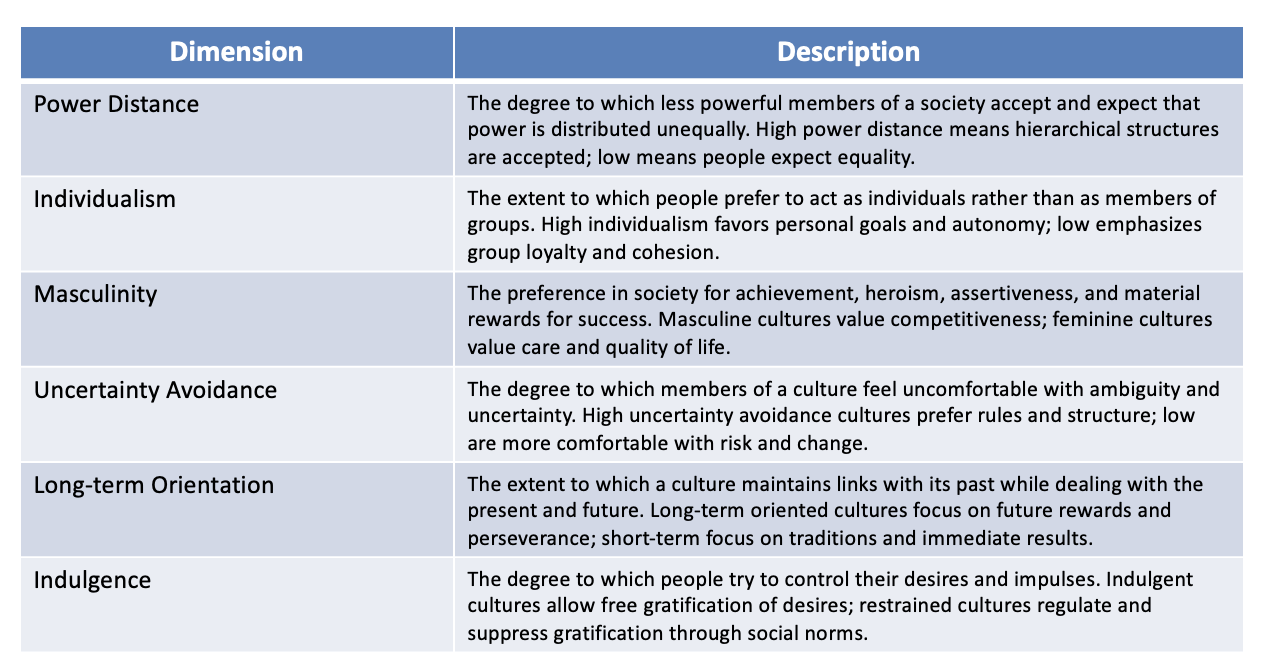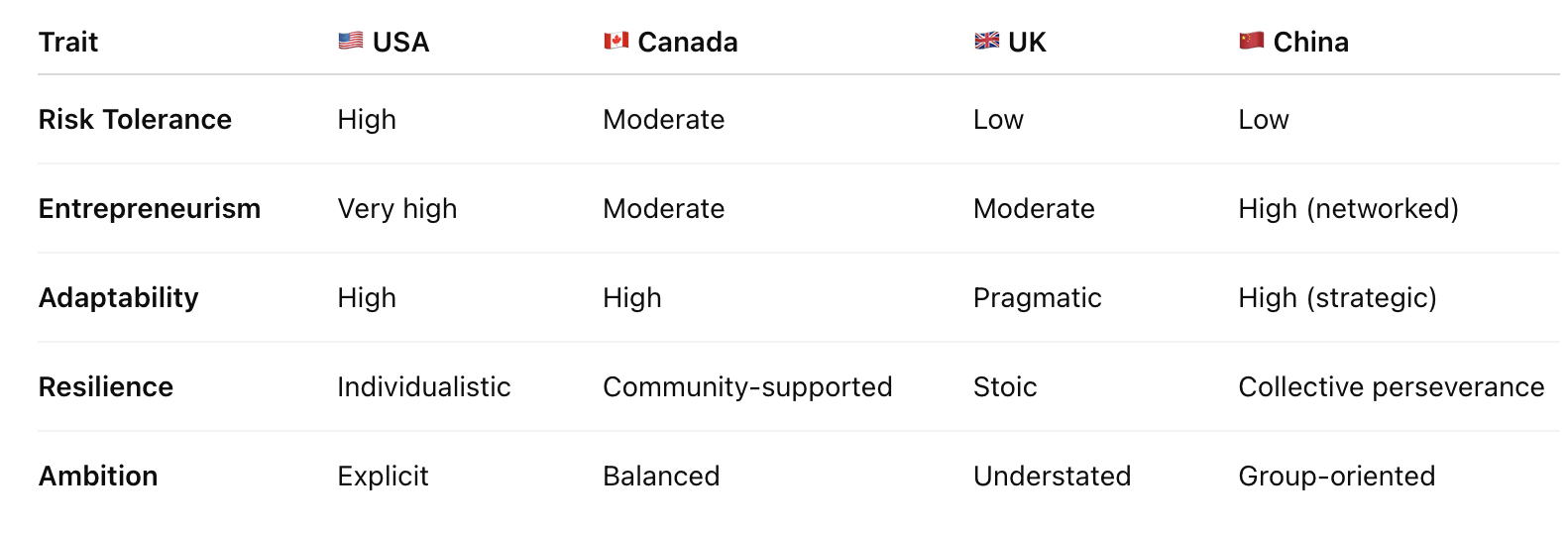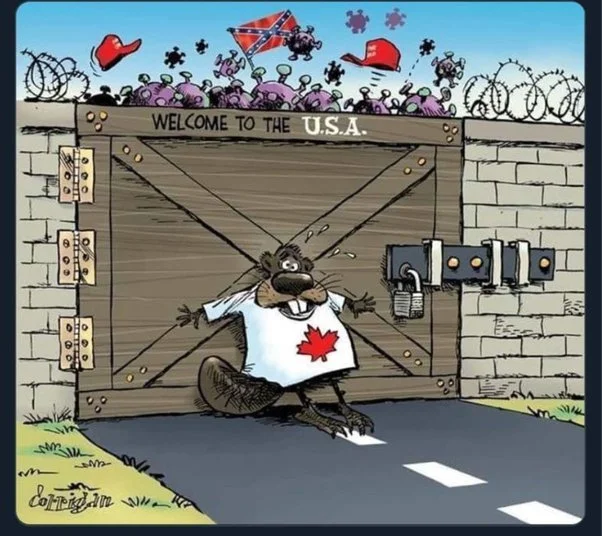July in North America always begins with a riot of red and white.
Then, 72 hours later, a larger, more raucous riot of red, white and blue.
I’m taking about July the 1st – Canada Day – and, this year, the 158th birthday of the True North. Strong and Free to finish the sentiment.
July 4th is, of course, Independence Day in America. This year was the 249th Anniversary so let’s just imagine how many fireworks will be set off – and hot dogs consumed – on July 4th 2026.
Beyond the spectacular outpouring of national pride, the symbolic affirmations of deeply held national values, there is always a quiet, almost palpable moment when each citizen pauses to reflect, and hopefully, reaffirm their commitment to their respective country.
For decades that recommitment for many Canadians included good-natured jabs at the US on two critical failings – their beer and their hockey skills.
Sadly, in Facebook terms, today’s Canada>US relationship might better be described as “It’s Complicated.”
This is not a geopolitical blog but watching the events unfolding across my country – from last year’s elections to the current very real, very tough discussions about how, where and when Canada pivots, it does stray into an area that I am deeply passionate about.
Culture.
Or more specifically how a group of individuals create a set of acceptable norms of behaviours that let them act, make decisions and feel safe.
The line above is one (of many) definitions about organizational culture but the same can be said for the culture of a country too.
What are the acceptable norms of behaviour?
What are the ways people act and make decisions?
And, most crucially in these uncertain and volatile times, do those decisions ingratiate or alienate them from their peers….and their fellow countrymen?
Enter Geert Hofstede, Dutch social psychologist (there’s a joke in there somewhere) and former IBM employee who explored these questions at a global level while working for IBM. In simple terms, like anyone who has had the privilege of interacting with colleagues globally, Geert wanted to understand if there was a way to dimensionalize the differences and similarities between nations. Between Americans, Brits, Swedes, Australians (heaven help us), South Africans (reigning Rugby World champions let’s not forget), the Chinese, the Japanese, Mexicans…and so on.
Here are the 6 dimensions along with Hofstede’s definition.
Hofstede’s Six Cultural Dimensions with synopsis. Source: ChatGPT
To show the table in terms of behaviours and actions, here is a quick synopsis for four countries you likely recognize…and may have an opinion on their country culture.
So….the burning question I have….while sipping on a delicious Canadian rye and ginger. (That’s a Canadian whiskey and ginger ale for the uninitiated.)
Mmmmm.delicious.
What set of questions would I be asking if this was an organizational culture, not a nation culture that incorporates over 41 million fantastic Canadians.
1. Are these cultural dynamics accurate?
2. Are these cultural dynamics helping or hurting us in the world we exist in today?
3. If they’re hurting us, can they be evolved?
On #1, there would be few who would argue that criticisms of safe, conservative, low risk threshold are regularly levelled at Canadian organizations across most sectors with banking, media, telecommunications and airlines bearing the brunt of it. Calls for more competitiveness in those sectors, reductions in artificial barriers to entry like licenses for banks, spectrum access for telcos and operating licenses for airlines have been leveled for decades.
On #2 the jury is split. Inclusion, multi-culturalism, social welfare, universal healthcare and education are manifestations of some critical and much beloved Canadian values. Immigration – of which my family are fortunate and deeply thankful recipients – is a deeply held value and source of pride for many Canadians. You just need to see the sea of nations waving Canadian flags on Canada Day to see just how beautifully multi-cultural we are. That has been a strength and one many believe we must continue. On that very point though, the size and composition of our immigration policy has come into sharp focus and fervent debate as second order effects – like affordable housing, education and healthcare – start to strain and buckle. If we do keep it, is it not critical to ask how it should evolve?
While we’ve not yet entered “DOGE” territory, the size and agonizingly slow posture of Canada’s Federal Public Services are another area under intense scrutiny. We adore that our Healthcare is managed by government, not insurance companies, but when that bureaucracy impedes our ability to build pipelines, extract oil and rare earth materials, fund AI development and make us globally competitive…we have a cultural problem.
On #3, this is where things get interesting.
The short answer is yes.
The longer answer is how quickly.
Cultural norms at a country level do evolve. Look at changing Japanese attitudes to life-long employment and the “salaryman” phenomenon. Look at increasing female business entrepreneurship across traditionally male environments in the Middle East and Asia. Look at Singapore or South Korea, modern economic and technological powerhouses, that have transformed unimaginably from a cultural perspective in the past five decades. The question is what change is required, what pace is needed for that change and what is the level of upheaval when that change occurs.
Forgive me for some dramatically simplistic questions that I’d ask every Canadian political and business leader to reflect on.
These may sound ominously like the ones you should be asking about your corporate culture. Now the lens is country culture.
What is your strategy for growth and what decisions does that require you and your people to make?
What is preventing those decisions from being made? Are they embedded attitudes, cultural values, the systems and processes you’ve chosen to use?
Would you make different decisions if you had a different composition of decision makers? This is where immigration and generational/gender dynamics come in
What aspect of your cultural norms are you unwilling to compromise on – and are you comfortable with what that means for your strategy? If you won’t compromise on low risk tolerance, then you can’t expect entrepreneurship and innovation to flourish.
I’ve been fortunate to call Canada home for over two decades. The people, the spirit, the sheer potential of this country is undeniable.
What’s less clear is our ability, willingness and appetite to adjust – and evolve – some of what made us so phenomenal in the past to the undeniable demands of the present.
And the expectations and aspirations of the future.
Shockingly those are decisions that humans – we Canadians – are required to make.
Them be some pretty important cultural one’s eh.
Elbows up.
An interesting use of celebrity and politics. Canadian icon Mike Myers and Canadian PM Mark Carney.
Footnote
1. I was very cautious to not stray into geopolitics but, it is impossible to forget that Canada, like other countries, is dealing with an unprecedented level of uncertainty. The structure of trade, the nature of alliances, the definition of relationships appear to change on the daily. Charting a course through that uncertainty will be no mean feat for any of our business and political leaders.
2. Corporate culture experts will be quick to remind me there is no single homogenous culture inside any organization. They are right. The same holds true for any country culture. We’re seeing that play out in many ways – haves and have nots, liberals and conservatives, red and blue, The East and The West. The urgent question is can we evolve enough of a unifying culture that we can decrease the gaps, the rifts, the frustration and the schisms? I sure hope so!!
3. If you do want a world class Geopolitical POV then Ian Bremmer’s G-Zero podcast should be your first stop.
This meme travels to and from Canada and the United States almost as much as a Ford 150 truck
References and Selected Reading
Hofstede, G., Hofstede, G.J., & Minkov, M. (2010). Cultures and Organizations: Software of the Mind (3rd ed.)
Minkov & Hofstede (2012). Cross-Cultural Analysis.
House et al. (2004). Culture, Leadership, and Organizations: The GLOBE Study.
Recommendations
The phenomenal Erin Meyer is the OG on cross-cultural behaviours and her books should be taught at every business school. My favourite is “The Culture Map” which has saved my bacon a few times.
“Kiss, Bow or Shake Hands” is another cross-cultural reference. Somewhat dated but it will ensure you know how deep to bow in Japan and what colour gifts in China and Saudi Arabia should be wrapped in.




